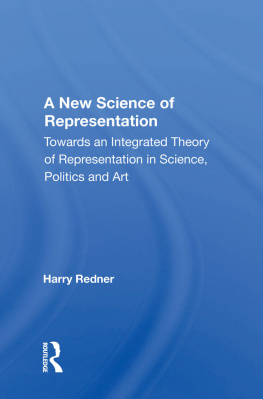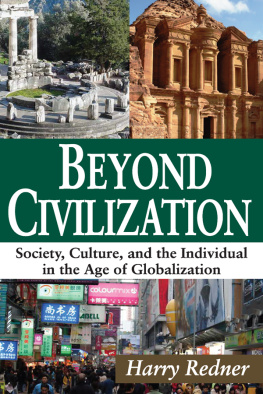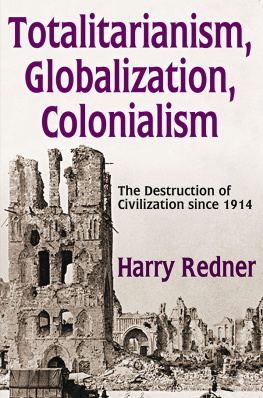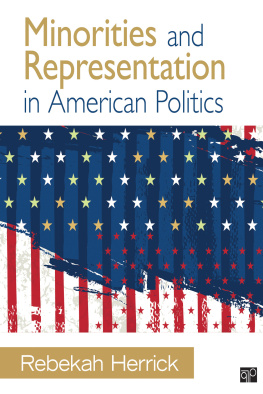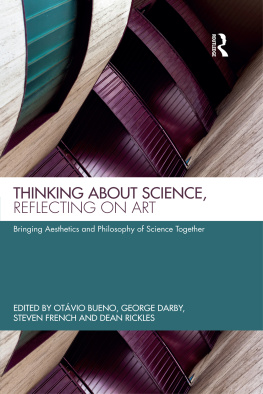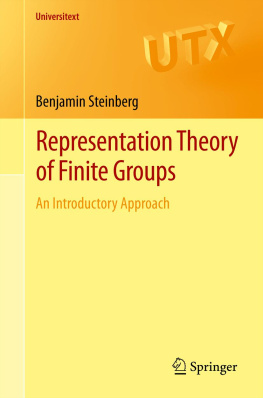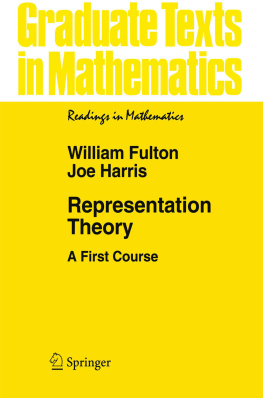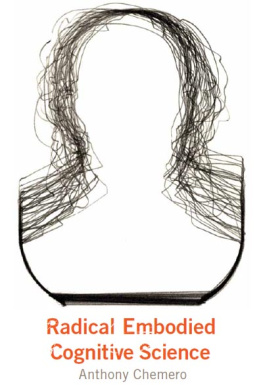A New Science of Representation
A New Science of Representation
Towards an Integrated Theory of Representation in Science, Politics and Art
Harry Redner
For Joachim, my son
First published 1994 by Westview Press, Inc.
Published 2018 by Routledge
52 Vanderbilt Avenue, New York, NY 10017
2 Park Square, Milton Park, Abingdon, Oxon OX14 4RN
Routledge is an imprint of the Taylor & Francis Group, an informa business
Copyright 1994 Taylor & Francis
All rights reserved. No part of this book may be reprinted or reproduced or utilised in any form or by any electronic, mechanical, or other means, now known or hereafter invented, including photocopying and recording, or in any information storage or retrieval system, without permission in writing from the publishers.
Notice:
Product or corporate names may be trademarks or registered trademarks, and are used only for identification and explanation without intent to infringe.
Library of Congress Cataloging-in-Publication Data
Redner, Harry.
A new science of representation: towards an integrated theory of representation in science, politics, and art / Harry Redner.
p. cm.
Includes bibliographical references and index.
ISBN 0-8133-2211-1
1. Representation (Philosophy). 2. CivilizationHistory. 3. CivilizationPhilosophy. 4. SciencePhilosophy. 5. Representative government and representation. 6. Art Philosophy. I. Title.
B 105.R4R43 1994
121'.68dc20
94-14892
CIP
ISBN 13: 978-0-367-00922-9 (hbk)
Contents
- PART ONE
HISTORICAL ANTHROPOLOGY OF CULTURE IN PRE-MODERNITY - PART TWO
THE OPENING AND CLOSING PHASES OF EUROPEAN MODERNITY - PART THREE
CULTURE IN A TECHNOLOGICAL WORLD CIVILIZATION
Guide
In a long work of this kind -- one which attempts to deal with culture from its most primitive beginnings to its most complex contemporary modes -- either an appropriately long and weighty introduction is desirable or almost none at all. I have chosen the latter course for many reasons, among which the exigencies of space is certainly salient. Besides, to have written a lengthy introduction explaining the whys and wherefores of the work would have forewarned the reader of unexpected turns of thought and so blunted the surprise of discovery. Instead, readers will have to plunge into it more as explorers of an unmapped land and find their own way. However, anyone chary of trudging through unfamiliar fields of thought without any markers whatever might turn first to the three short introductions to the major parts of the book. These three parts are ordered in a very simple sequence of cultural development: the first deals with the anthropology and history of cultures from their primitive beginnings to those of the high cultures of the early civilizations; the second covers the culture of Modernity from its start during the Reformation period to the end of its European phase in the age of Revolution close to our own time; the third focuses on our cultural predicament in the present and considers in some detail the problems of representation in a technological World civilization.
As the subtitle indicates, the work deals with representation in science, politics and art both in its historical dimensions and in its contemporary expression. And as the main title intimates, it follows in the footsteps of Vico, as will be readily apparent to anyone familiar with the ideas of this unusual "non-philosophical" thinker. The work belongs to the tradition of the "science of culture", which, starting with Vico, also takes in such figures as Comte, Simmel, the two brothers Weber, Norbert Elias and some of their contemporary descendents. As with all of these, this work, too, is not merely "scientific" in any rigid methodological sense, but also critical and prescriptive; it aims to reveal the current trends of culture and guide these towards the goal of a future culture for the coming global technological civilization.
I am now optimistic enough to believe that such a culture is possible. My feeling of hope has been strengthened by some unexpected recent events in global politics and by the prospects of new departures in the sciences. The sudden collapse of totalitarianism almost throughout the world and the resultant lessening of the worst perils of nuclear war has made me rethink the premises and conclusions of some of my earlier works in a more relaxed spirit, particularly those of In the Beginning Was the Deed (1982). Of course, one cannot be sure how permanent this will prove to be, but while it lasts it makes it easier to breathe and less daunting to think. The new scientific developments are also promising but insecure; I have in mind specifically the so-called new "sciences of complexity", such as chaos theory and fractal geometry which are discussed towards the end of this book. Unfortunately, as detailed assessment in the work reveals, the contemporary outlook in art and intellect is still bleak. But that, too, could alter in unforseen ways, perhaps sooner than one can reasonably expect.
I forebear offering any apologia for daring to attempt a work of this kind in our present intellectual climate. Nor will I itemize what it has cost me over many years. Only those nearest to me know the price that it exacted. For its publication I thank Everett Mendelsohn and Spencer Carr, sine qua non.... For putting the manuscript into a state fit for publication, I thank Lynette Carter.
Finally, I take this opportunity to acknowledge that this book was published with the assistance of the Monash University Publication Committee.
I dedicate this book to my son Joachim who grew as it grew and might one day want to know what all this incessant daily toil was for.
Harry Redner
Part One
Historical Anthropology of Culture in Pre-Modernity
All cultures represent, each in its own way. Whether through science, politics and art, as ours does, or through myth, ritual and rite, as so-called primitive cultures do, or through theology, ceremony and drama, as some of the older cultures did - all cultures, irrespective of their antiquity or modernity, develop their own forms of representation. Culture is to a considerable extent, though never completely, a network of representations. Representation might not be the whole of a culture, but it is always the salient constitutive feature of it. This is not to claim that a culture is a system of representations which cohere with each other in all respects. For many cultures are not fully integrated entities -- systems in the Structuralist sense -- and especially so if they are in the process of change. But neither can it be the case that the forms of representation in a culture have nothing to do with each other; even though in the disjunctive diversity of modern cultures it almost seems as if this is the norm. No matter how chaotic a culture is, it will evince some representational connections, otherwise human beings could not inhabit it. Man cannot stand cultural chaos, which does not mean that only complete cultural cosmos is tolerable.
It is because of its diversity that it is futile to search for a fixed definition of culture, for one formula that will cover all possibilities of history. Neither is it worthwhile to try to isolate a unique representational component in all cultures. What is cultural and what is not, what is representational within culture all this varies according to the changing historical situation in which culture is embedded. Furthermore, any such attempted definition depends on the anthropological theory one is deploying. In conformity with their respective theories anthropologists have provided varying definitions of culture. One of the earliest is Tylor's (1871, 1) formulation which states that culture "is a complex whole which includes knowledge, belief, art, law, morals, customs and any other capabilities and habits required by man as a member of society." This is very much an all-inclusive account which contains almost everything to be found in a society. And furthermore, it presupposes that it all constitutes a "complex whole", which in many instances, above all in our culture now, is open to question. More recent anthropologists are no less inclusive. ITius Kroeber and Kluckhohn (1952, 181) define culture as "patterns, explicit and implicit, of and for behaviour acquired and transmitted by symbols, constituting the distinctive achievement of human groups, including their embodiment in artefacts; the essential core of culture consists of traditional (i.e. historically derived and selected) ideas and especially their attached values". This definition focuses on symbols, ideas and values; yet it includes behaviour and artefacts, which also makes it potentially all-encompassing. In what follows we shall not be concerned with the full scope of culture in this sense. Symbols, ideas and values will be an important part, but only in so far as they involve representations; all other aspects of culture we shall omit. We shall also omit all other senses of representation except the cultural one here specified, for example, mental representations as these figure in cognitive science will not be our concern.


